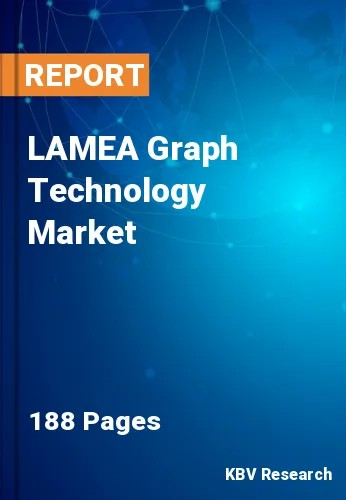The Latin America, Middle East and Africa Graph Technology Market would witness market growth of 24.6% CAGR during the forecast period (2023-2030).
The market has emerged as a dynamic and transformative data management and analytics force. Graph technology, often associated with graph databases and graph analytics, has gained widespread recognition for its capacity to provide unique insights into complex relationships, connectivity, and patterns within data. It has found applications in diverse industries, from social networking and recommendation systems to healthcare and fraud detection. In addition, organizations' approaches to data management and analytics are changing due to the adoption of graph technology.
Unlike traditional relational databases, designed for structured data, graph databases are tailored to handle unstructured and semi-structured data with a focus on relationships. This fundamental difference has made graph databases increasingly attractive for complex, interconnected data applications. One of the primary drivers behind the adoption of graph technology is the recognition of the limitations of conventional data management systems. Businesses and institutions deal with inherently relational data, and often, data relationships are as valuable as the data itself.
The UAE, particularly Dubai and Abu Dhabi, has invested heavily in healthcare infrastructure. In accordance with the report titled Investing in Healthcare in the UAE, released by the UAE Ministry of Economy, the pharmaceutical industry is one of the key subsectors to expand, according to the Dubai Industrial Strategy 2030 and the Abu Dhabi Vision 2030, given its potential for future growth, export potential, and medium- to long-term economic effect. The Middle East and North Africa's healthcare sector will increase from US $144 billion in 2020 to $243 billion by 2023, and Dubai's healthcare sector will play a crucial role in this rise. Thus, rising healthcare and pharmaceutical investments in the LAMEA countries will propel the growth of the market in the region.
The Brazil market dominated the LAMEA Market by Country in 2022, and would continue to be a dominant market till 2030; thereby, achieving a market value of $305.5 million by 2030. The Argentina market is experiencing a CAGR of 25.3% during (2023 - 2030). Additionally, The UAE market would exhibit a CAGR of 24.3% during (2023 - 2030).
Based on Component, the market is segmented into Software and Services. Based on Database Type, the market is segmented into Relational (SQL) and Non-relational (No SQL). Based on Deployment, the market is segmented into On-premise and Cloud. Based on Graph Type, the market is segmented into Property Graph, Resource Description Framework (RDF) and Hypergraph. Based on Analysis Model, the market is segmented into Path Analysis, Connectivity Analysis, and Community & Centrality Analysis. Based on Industry, the market is segmented into IT & Telecom, Supply Chain & Logistics, Retail & E-commerce, BFSI, Healthcare & Life Science, Government & Public Sector, and Others. Based on Application, the market is segmented into Data Management & Analysis, Fraud Detection, Customer Analysis, Compliance & Risk, Identity & Access Management, and Others. Based on countries, the market is segmented into Brazil, Argentina, UAE, Saudi Arabia, South Africa, Nigeria, and Rest of LAMEA.
Free Valuable Insights: The Worldwide Graph Technology Market is Projected to reach USD 15 Billion by 2030, at a CAGR of 22%
The market research report covers the analysis of key stake holders of the market. Key companies profiled in the report include Oracle Corporation, IBM Corporation, Neo4j, Inc., Stardog Union, Amazon Web Services, Inc. (Amazon.com, Inc.), Microsoft Corporation, ArangoDB Inc., TigerGraph, Inc., Progress Software Corporation and DataStax, Inc.
By Component
By Database Type
By Deployment
By Graph Type
By Analysis Model
By Industry
By Application
By Country
Our team of dedicated experts can provide you with attractive expansion opportunities for your business.

